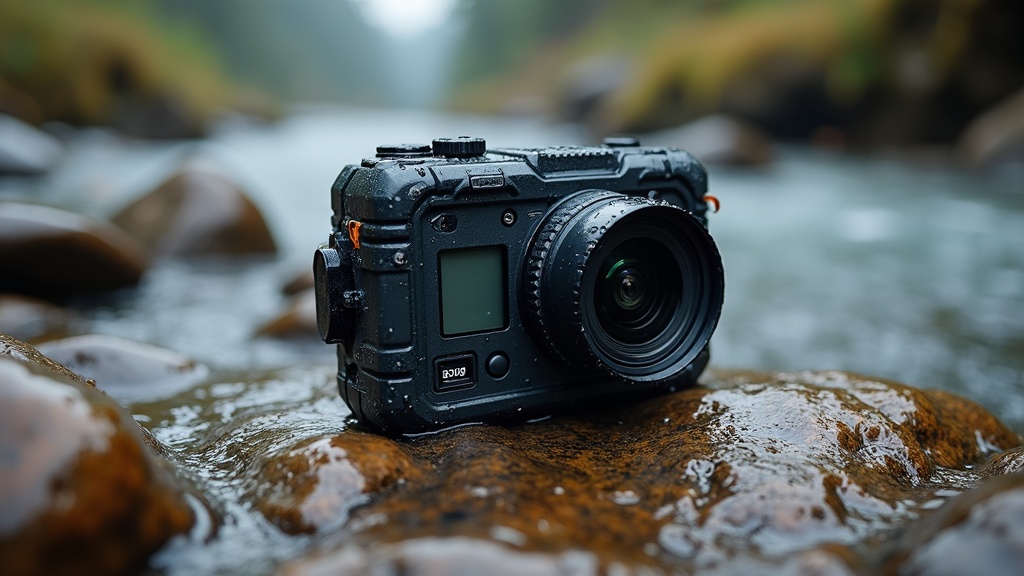Adventure travel and photography are a perfect match, but wet conditions and rugged environments can quickly put a regular camera out of action. That’s where waterproof cameras step onto the scene. They’re built for tough conditions, whether you’re snorkeling in crystal clear bays, river rafting, or hiking through tropical downpours. After giving quite a few a try and talking with fellow travelers, I’ve pulled together a selection of waterproof cameras that offer solid performance, real reliability, and are easy to use, especially if you want to soak up the adventures without fussing over your gear.

Why Waterproof Cameras Matter for Adventure Travelers
Bringing a waterproof camera on an adventure trip is basically a big upgrade for your travel plans. These cameras let you shoot underwater scenes, snap foggy mountain views, and cut out the stress about accidentally dropping your camera into a puddle or getting caught in the rain. While smartphones with water resistance can be handy, dedicated waterproof cameras come out ahead with better ergonomics, longer battery life, optical zoom, and a much sturdier build. Some models can even handle being dropped from a few feet, frozen solid, or used with gloves on. That’s a huge bonus for anyone who loves unpredictable outdoor travel.
The adventure travel scene has exploded and camera companies have definitely kept pace with the latest tech. Investing in a tough camera that’s ready for anything means you’ll head home with colorful, sharp memories from all sorts of wild situations—no matter what the weather or terrain throws your way.
Key Features to Look For in Waterproof Cameras
Picking a waterproof camera isn’t just about making sure it can handle a splash at the beach. Here are a few things I always check out before picking one:
- Waterproof Rating: All cameras will show a maximum depth they can handle. If you like snorkeling, pick something rated to at least 10 meters (33 feet). If you’re into diving, you’ll want 15 meters or more with no extra housing.
- Shockproof and Freezeproof: Look for how far you can drop it (measured in meters or feet) and whether it can stand up to the cold. That’s important for mountain or glacier trips.
- Battery Life: Waterproof cases make batteries tricky to swap on the fly. Double check how many photos or minutes of video you get per charge, especially for longer adventures.
- Lens and Zoom: Most waterproof cameras have internal zooms, so there are no moving parts sticking out. A sharp lens with at least a 4x optical zoom is my baseline.
- Rugged Controls: If you wear gloves, chunky buttons are much easier to press while you’re on the move.
- Image Quality and Video: Look for at least 12MP and Full HD video (4K is increasingly common these days).
Tough cameras are genuine multitaskers. Features like GPS, compass, and WiFi are worth looking for as well. It’s super handy to tag locations or instantly beam pictures from your camera right to your phone for sharing with friends—even if you’re deep in the wilderness.
My Top Picks for Waterproof Cameras
Here are some waterproof cameras I’ve seen work incredibly well for adventure travel. Each model has its own vibe, depending on what features are most important to you. Now, let’s break down the features that stand out.
- Olympus Tough TG6: This is the model I recommend most often for an all-in-one adventure solution. It’s waterproof to 15 meters, shockproof, freezeproof, and dustproof. Its macro mode is perfect for underwater closeups and you get RAW shooting as well as 4K video. The menu is easy for beginners, and it can take a drop on rocks without a hiccup.
- GoPro HERO12 Black: Technically an action camera, but the HERO12 is a favorite for those who want both adventure video and stills in a super portable package. It’s waterproof to 10 meters with no need for a case, and the stabilization is next-level cool when filming rough activities like kayaking or mountain biking. With loads of mounts available, you can capture handsfree POV footage easily.
- Fujifilm FinePix XP140: This compact camera is waterproof to 25 meters and features built in Bluetooth. It’s lightweight, comes in bright colors, and is easy to toss into your pocket. Image quality is strong in daylight, and its intuitive controls are perfect for all skill levels.
- Ricoh WG6: For those needing a tanklike camera, the WG6 is made for you. It handles depths to 20 meters, is shockproof, and has LED ring lights around the lens that make closeup and detail shots underwater pop. Its built in GPS tracker comes in handy if you’re caving or exploring after dark.
- Nikon COOLPIX W300: This camera strikes a solid balance between advanced features and user friendliness. Waterproof down to 30 meters, with 4K video, GPS, an altimeter, and built in WiFi. The lens is quick to focus and works great even in wild or stormy conditions.
Every one of these models takes rough weather, dirt, sand, and drops in stride. My go-to is usually the Olympus TG6 for its well rounded features and reasonable price, but if you’re mainly hunting for video action, GoPro is the pick for you.
Before You Buy: Extra Considerations for Rugged Cameras
Not all waterproof and rugged cameras are made equal. Before buying, think about how you’ll actually use the camera. I recommend considering the following:
- Purpose: Spend lots of time snorkeling? Grab a camera with a greater depth rating. More into hiking through mud and rain? Get one that’s proven to hold up against raindrops and dust.
- User Interface: Touchscreens can be tough to use when your fingers are wet, frozen, or gloved. Old school physical buttons are often slower but more reliable when things get wild outside.
- Accessories: Floating wrist straps, spare batteries, and hard cases are must haves. Some brands have their own lens hoods or protective sleeves to help shield from scratches and bumps when traveling.
- Warranty and Support: Double check warranty coverage. Adventure gear is built to last, but being able to quickly fix or replace a camera after something wild goes down is a big time saver.
Checking honest real world reviews and comparisons is smart as well. The adventure travel scene online is super lively and quick to point out pros, cons, and quirks for each camera model, often with photos and videos.
Advice for Using Waterproof Cameras in the Wild
To get the most out of these cameras, a bit of practice goes a long way. Here are some habits I recommend picking up to keep trips smooth and your gear working its best:
- Rinse After Use: Always rinse your camera in fresh water after popping it in saltwater or muddy rivers, and dry it before opening the battery or memory card compartments.
- Take Care of O-Rings: Check the rubber seals in battery doors—keep them clean and a little greased to avoid losing your waterproof defense.
- Double Check Settings: Autofocus and scene modes usually nail it, but consider adjusting exposure or switching to underwater white balance if colors look off during your shoots.
- Strap It Down: Waterproof or not, losing a camera in a fast river or off a sailboat can be a headache. Secure those floating straps or wrist tethers to keep it close.
- Bring Extra Memory: Shooting HD or 4K video fills memory cards quickly. Swapping cards is much easier away from water instead of at the edge of a river or ocean.
Getting comfortable with the controls and layout of your camera will let you react fast, so you won’t miss that once-in-a-lifetime shot or those wild, sudden moments.
Common Questions About Waterproof Adventure Cameras
Here are answers to a few frequent questions from folks getting set for their first adventure with a waterproof camera:
How deep can I take my waterproof camera?
Each camera lists a maximum depth, usually on the device or package. Make sure to read it before taking the camera deep underwater, and stick to recommended limits for best performance.
Can I use my waterproof camera in freezing conditions?
Most tough models can handle temps down to -10°C (14°F). Keep your batteries warm in your jacket or pockets to make sure they last as long as possible.
Does the image quality match DSLRs or the latest smartphones?
Waterproof cameras usually sit a step below high-end DSLRs or top-of-the-line smartphones for pure picture quality. Still, they have the edge for durability, reliability, and flexibility in harsh environments where phones and regular cameras may fail.
Practical Takeaways
Nabbing the right waterproof camera means you can snap those wild moments without sweating over expensive electronics being ruined by water, mud, or sand. Each of these cameras gives you peace of mind to shoot in rain, deep water, or at a blustery summit—while letting you relax and live the adventure. If you’re planning a trip that could get wet, wild, or bumpy, bringing one along is a solid move. Not only will you have more fun and freedom with your gear, you’ll come home with a gallery of photos that really capture the adventure in all its unpredictable, messy glory.
